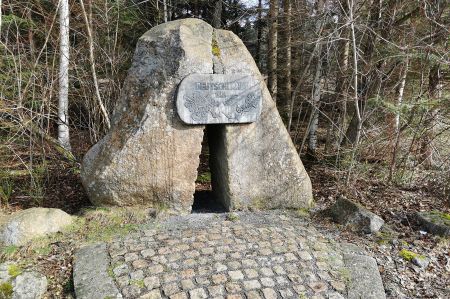Hike and thoughts on the Bremke border monument
- Written by Portal Editor
The probably most important event in the centuries-old history of the town of Braunlage was without a doubt the opening of the border in 1989.
Braunlage, until the time the border was opened only a few hundred meters from the border with the GDR, was now suddenly in the middle of the Harz Mountains. The memory of the road that ended in nowhere in the direction of Sorge and Tanne before reunification is still fresh in our minds. However, a rather reserved memorial reminds of the German division and then reunification of the former inner-German border, which at the same time forms the current municipal border between Braunlage and Elend, right next to the B 27. Our hiking destination today was this border monument, which we from Schierke via the Harz Bremketal / Grenzweg coming, a hiking route of almost 7 kilometers. Today, Schierke, our starting point, has also become a touristically important place, since Schierke is also well known as a starting point for hikes on the Brocken (we had already reported about it, but a hike in the freezing cold in winter).
Inner-German border and the Cold War – a return today?
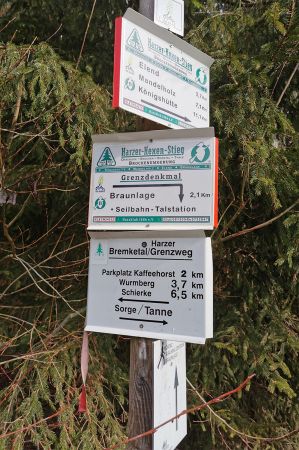 The almost 1400 km long inner-German border, also known as the demarcation line, prevented the inhabitants of the German Democratic Republic from visiting the Federal Republic of Germany or even from leaving the Federal Republic permanently in the west until 1989 through massive, inhuman fortifications. The course of the demarcation lines between the western zones of occupation and the Soviet zone of occupation (SBZ) was determined by the main victorious powers of the Second World War in several conferences and continued in this geographical form after the founding of the two German states in 1949. The border began in the south at the border triangle of Bavaria, Saxony / GDR, Czechoslovakia and ended at the Baltic Sea in Lübeck Bay on the Priwall peninsula. During the Cold War, it was part of the Iron Curtain, both militarily and geopolitically.
The almost 1400 km long inner-German border, also known as the demarcation line, prevented the inhabitants of the German Democratic Republic from visiting the Federal Republic of Germany or even from leaving the Federal Republic permanently in the west until 1989 through massive, inhuman fortifications. The course of the demarcation lines between the western zones of occupation and the Soviet zone of occupation (SBZ) was determined by the main victorious powers of the Second World War in several conferences and continued in this geographical form after the founding of the two German states in 1949. The border began in the south at the border triangle of Bavaria, Saxony / GDR, Czechoslovakia and ended at the Baltic Sea in Lübeck Bay on the Priwall peninsula. During the Cold War, it was part of the Iron Curtain, both militarily and geopolitically.
Both German states officially referred to the German-German border as the "demarcation line" until 1956, the GDR as the "border" and from 1964 as the "state border". In West Germany it remained the "demarcation line", colloquially often the "zone border", because the GDR was known as the "SBZ" (Soviet zone of occupation), "Soviet zone", "Eastern zone" or simply as the "zone" until the conclusion of the basic treaty on reunification, some newspapers only put the abbreviation “GDR” in quotation marks to express euphemism, irony or sarcasm.
Both are inhuman and demeaning – from the East and from the West!
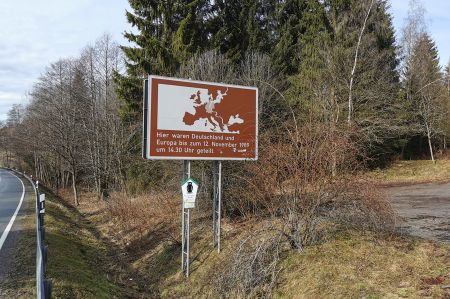 When the Federal Republic of Germany recognized the GDR as a separate state under constitutional law in the Basic Treaty in 1972, this border also formally became a state border. However, the GDR was never regarded as a foreign country under international law until its end by the Federal Republic of Germany, which would have contradicted the reunification requirement of the Basic Law: As a result, the individual citizenship introduced by the GDR in 1967 was interpreted by the Federal Republic in such a way that citizens of the GDR as Germans in the Articles 16 and 116 of the Basic Law applied.
When the Federal Republic of Germany recognized the GDR as a separate state under constitutional law in the Basic Treaty in 1972, this border also formally became a state border. However, the GDR was never regarded as a foreign country under international law until its end by the Federal Republic of Germany, which would have contradicted the reunification requirement of the Basic Law: As a result, the individual citizenship introduced by the GDR in 1967 was interpreted by the Federal Republic in such a way that citizens of the GDR as Germans in the Articles 16 and 116 of the Basic Law applied.
Iron Curtain – just a little further east?
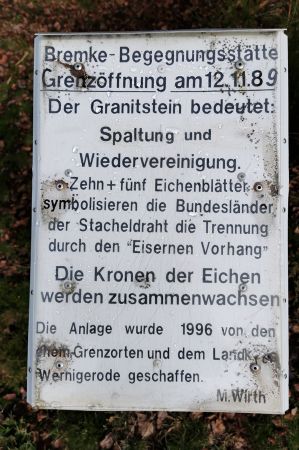 A few decades later, when it was believed that the "Iron Curtain" between West and East had finally been overcome, a completely different picture emerges. The war in Ukraine shows once again what dictatorial regimes are willing to do when their power is threatened or restricted. Then only one's own ideology counts, not the person and / or citizen as an individual. Once again, the orientations of the two political systems East and West, perhaps better democratic and dictatorial, are shown to be incompatible, even so opposed to each other that the consequences are far from foreseeable. At the same time, aggressors and defenders only have this one earth at their disposal, forgetting the far greater problem of the already badly destroyed environment, it is increasing every day, even without this stupid, inhuman war.
A few decades later, when it was believed that the "Iron Curtain" between West and East had finally been overcome, a completely different picture emerges. The war in Ukraine shows once again what dictatorial regimes are willing to do when their power is threatened or restricted. Then only one's own ideology counts, not the person and / or citizen as an individual. Once again, the orientations of the two political systems East and West, perhaps better democratic and dictatorial, are shown to be incompatible, even so opposed to each other that the consequences are far from foreseeable. At the same time, aggressors and defenders only have this one earth at their disposal, forgetting the far greater problem of the already badly destroyed environment, it is increasing every day, even without this stupid, inhuman war.
Should one actually go so far as to claim that this conflict can still have some positive aspects, as was the case with the "Iron Curtain" border? Of course, many will now say, the armaments industry and energy supply are making endless profits and there will be no excess profit tax, at least in Germany. The next conflict is already clearly evident with China, because our dependence there is even greater.
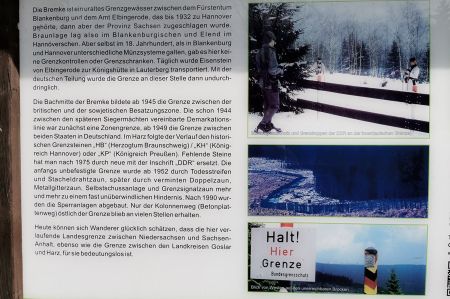 The "zone border" at least had something good, because the up to 500 m wide "protection strip" along the border, which was laid out on the eastern side in 1952 and was largely untouched for many decades, has become a retreat for many people threatened with extinction animal and plant species developed.
The "zone border" at least had something good, because the up to 500 m wide "protection strip" along the border, which was laid out on the eastern side in 1952 and was largely untouched for many decades, has become a retreat for many people threatened with extinction animal and plant species developed.
Shortly after the fall of the Wall in 1989, the Bund für Umwelt und Naturschutz Deutschland (BUND) and the Free State of Thuringia founded the Green Belt Germany nature conservation project, which encompasses a large part of the former border area.
Perhaps a thought that the warring parties should also take up. IT will take decades to repair the damage, consuming billions of money that could have helped the environment and with it a chance for the earth.
Please read as well:
